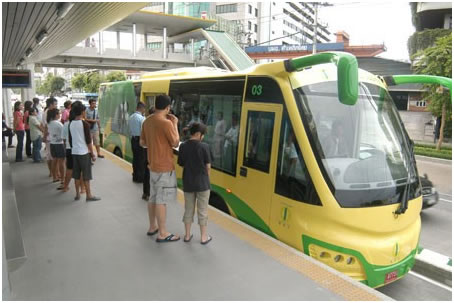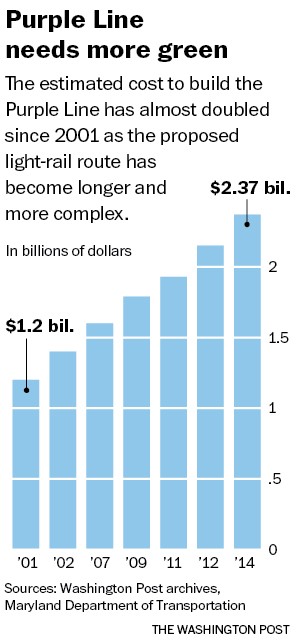Today, D.C. District Court Judge Richard Leon issued his opinion in the case challenging the Environmental Impact Study (EIS) for the Purple Line light-rail project. The nub of the ruling is that the Federal Transit Administration (FTA) was “arbitrary and capricious” in its failure to demand a reexamination of the impact of declining Metro ridership on projections of future Purple Line ridership.
In plainer English, the judge thinks that Metro’s continuing failures could well mean that the Purple Line will carry significantly fewer people than projected–a claim difficult to examine as the State has kept the methodology for estimating ridership a closely held secret.
In the legal battle, the State argued unconvincingly that the Purple Line is unaffected by Metro as it is a different mode even as it claimed in the EIS that the Purple Line is needed to connect people to Metro. Seriously, this was the State’s claim (see p. 6 of the opinion).
The ruling was a surprise because winning a case under the National Environmental Policy Act (NEPA) is difficult. As the Court mentioned in the opinion, the scope of review is “narrow” and “a court is not to substitute its judgment for that of the agency.”
According to the Maryland Transit Administration (MTA), this result should delay the Purple Line:
[D]uring a June 15 hearing in the case, lawyers for the MTA and federal government said redoing the ridership forecasts would push back the project by six months and could unravel its $5.6-billion, 36-year public-private partnership.
In a subsequent court filing, lawyers for the Maryland Attorney General’s Office said having to redo the ridership forecasts “would be profoundly disruptive and could jeopardize the Purple Line project” because it could “have cascading consequences on the project schedule and financing arrangements.”
As MTA has so many times, I suspect it will change its tune in light of the decision and come up with an SEIS more quickly, so I doubt very much it will kill the project. Nevertheless, the irony remains that the proponents favor the project on environmental grounds. Yet the Court has delayed the Purple Line for failure to comply with environmental law.
To be continued.



